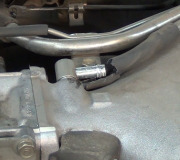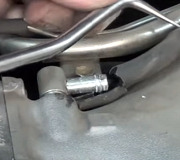Make: Ford
Model: 2001 Mustang
Engine: 3.8L v6
Trans: Automatic
-Description
To start with, there is no engine light associated with this problem. This problem has been going on for more than a year now and I have had a mechanic look at it in the past. I was hoping the engine light would have come on or at least the problem to get worse to help identify the exact cause but I think time has run out for this option
The problem is most noticeable while the car is parked and idling. The engine RPMs are obviously to high and can occur both when you first start the car or after driving it for awhile. RPMs at its most extreme clocked in at 3,000RPMs while at idle although more recently it's more around 1,200RPMs to 1,500RPMs. The problem is sporadic and can suddenly go away as quickly as it starts. Sometimes I can go a month without it happening, sometimes it feels it's the whole month that it is happening. Temperature does not seem to be a factor as it has happened in the heat of summer and dead of winter both when the car is cold and hot. While in idle, you can sometimes catch the car stepping up and stepping down the RPMs by a factor of 100RPMs and the RPMs tend to fluctuate. Normally, while the RPMs are high, you'll also notice the RPMs drop slowly by 200 to 400RPMS and then suddenly kick back up landing anywhere from higher to lower than it was just at. This process will repeat with the occasional continued drop on each high kick till the RPMs are back under 1,000 and sometimes it never seems to stop and can end up being even higher.
The problem can also appear to happen while the car is in gear but it much harder to identify by watching the RPMs. Only when the problem is extreme does it feel like the car is being pushed and you are fighting it with the break. What's much more noticeable while the car is in gear is when your coming to a stop. Right before you come to a complete stop, you feel what feels like a clutch in a manual vehicle start to pull out which is immediately followed by the car being kicked forward. How hard the car is kicked forward depends on how high the RPMs want to go. I used to believe that my transmission was starting to go until the problem became worse and I noticed it is directly associated with the high RPMs.
As I've stated previously, I've had a mechanic look at this problem. About 8 months ago the problem reached a peak with the RPMs jumping to almost 3,000 and I started to worry about rear ending someone when the car unexpectedly kicks forward. The mechanic did a series of tests, cleaned the manifold, replaced the Idle Air Control Valve, and I believe replaced some sort of canister in the EVAC system although I can't find my receipt at the moment. When I got the car back, the problem was back to its occasional problem of 1,200-1,500 RPMs, and the mechanic sent the IAC back as defective, mentioning it had a short and installed a new one. The problem seemed to have go away but it didn't take long to show back up and I've been driving with it ever since hoping the engine light would come on.
-Symptom Summary
RPMs ocassionally to high during idle
RPMs ocassionally to high while in gear
Vehicle kicks forward when approaching a stop followed by high rpms
-Attempted Fixes
IAC replaced twice
Manifold cleaned
EVAC Canister replaced (I think)
-Other known problems
Exhaust leak near the exhaust manifold
Vampire drain from radio (Temp Solved: Pulled Fuse)
Overdue for new spark plugs and coil
Anyway, I'm going to use my tax return to try and resolve this issue before it causes something worse like ruining the transmission or something. I'm attempting to increase my knowledge on the issue as much as possible before I go into try and tackle this one again.
SPONSORED LINKS
Sunday, February 16th, 2014 AT 4:18 PM



